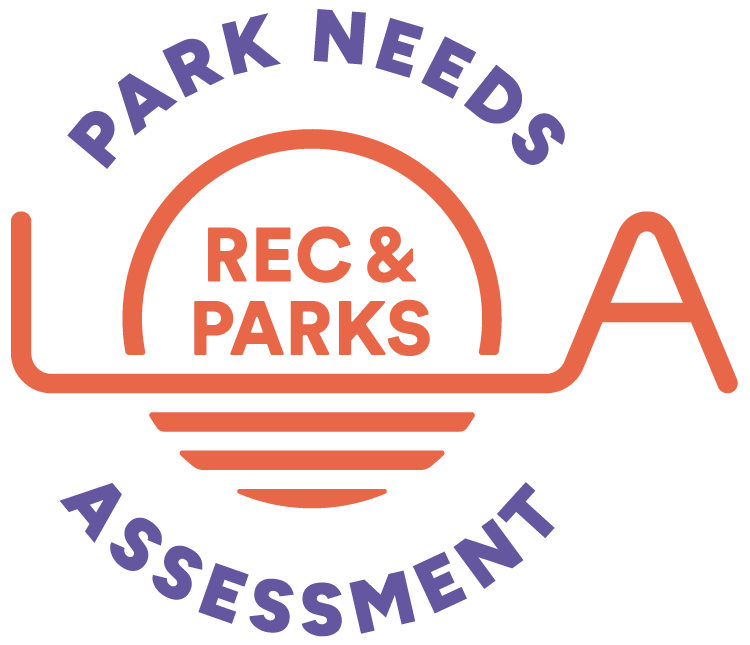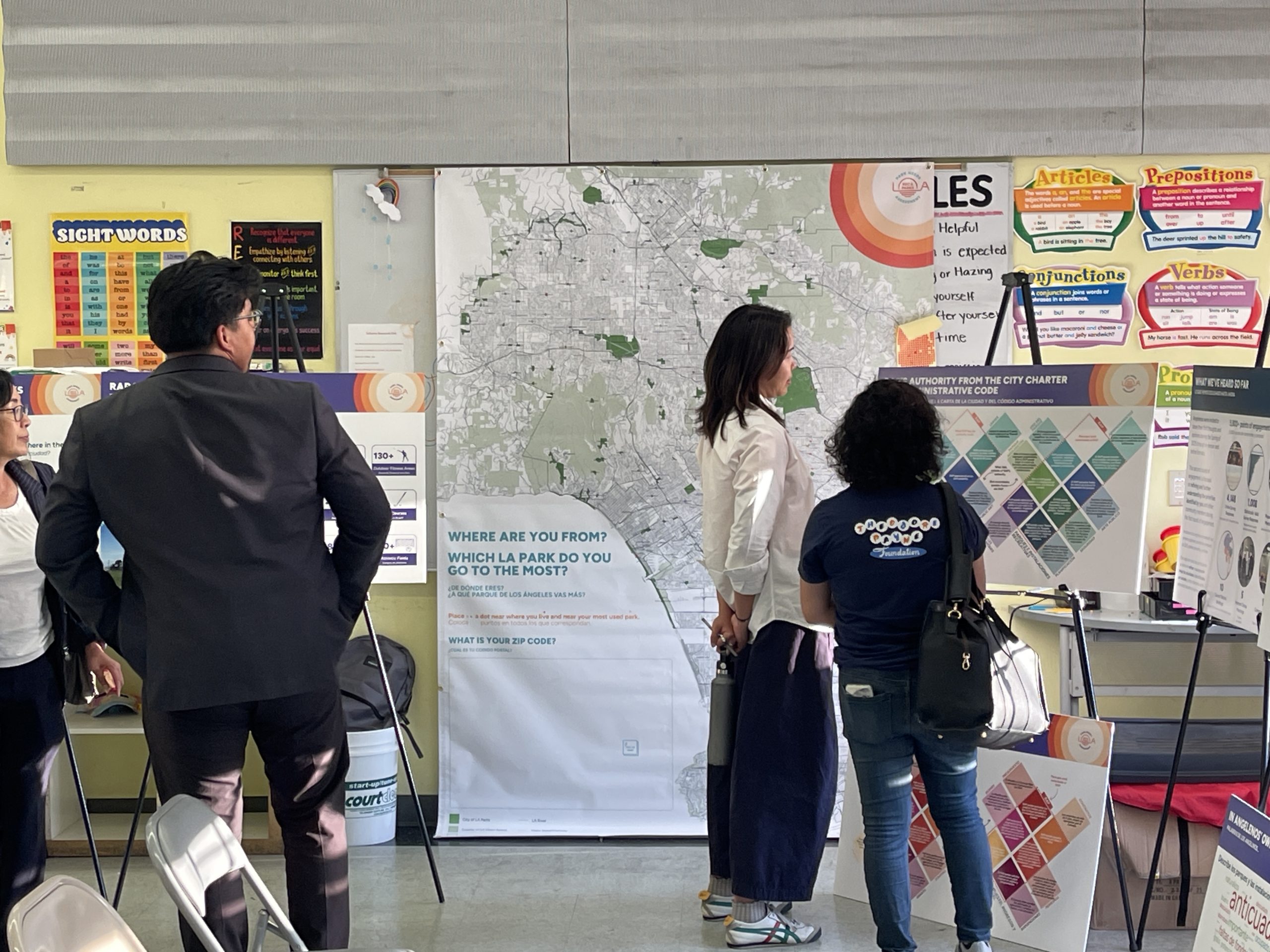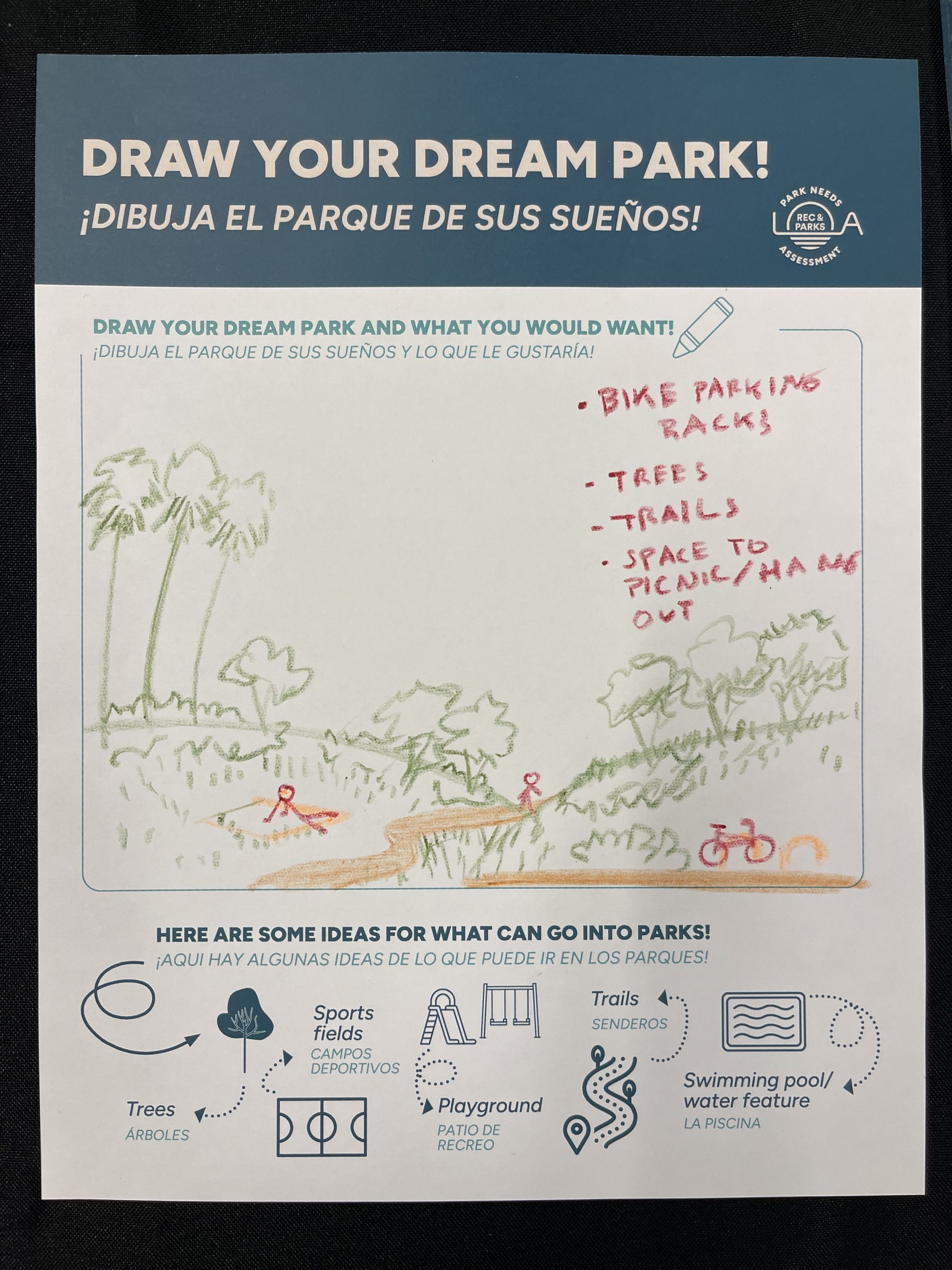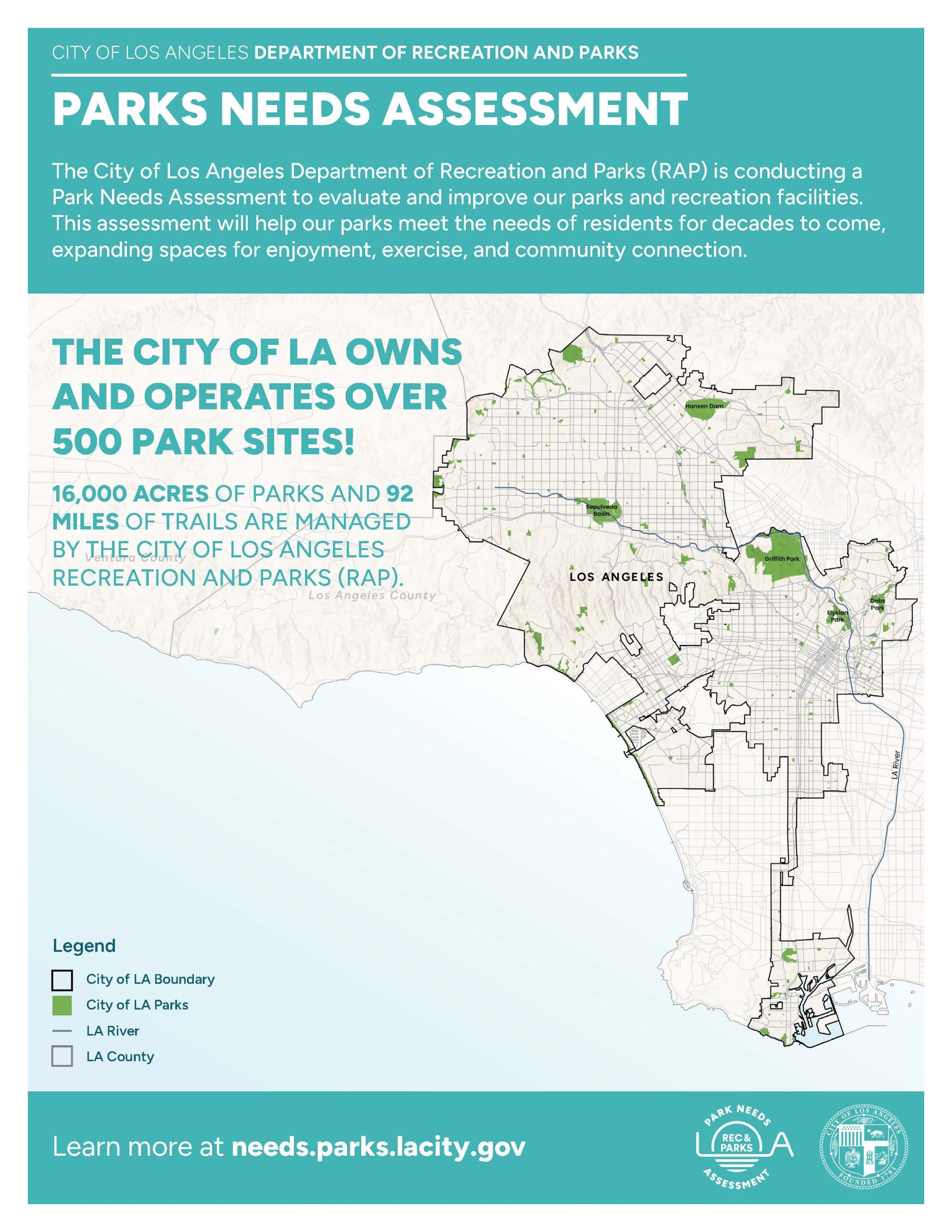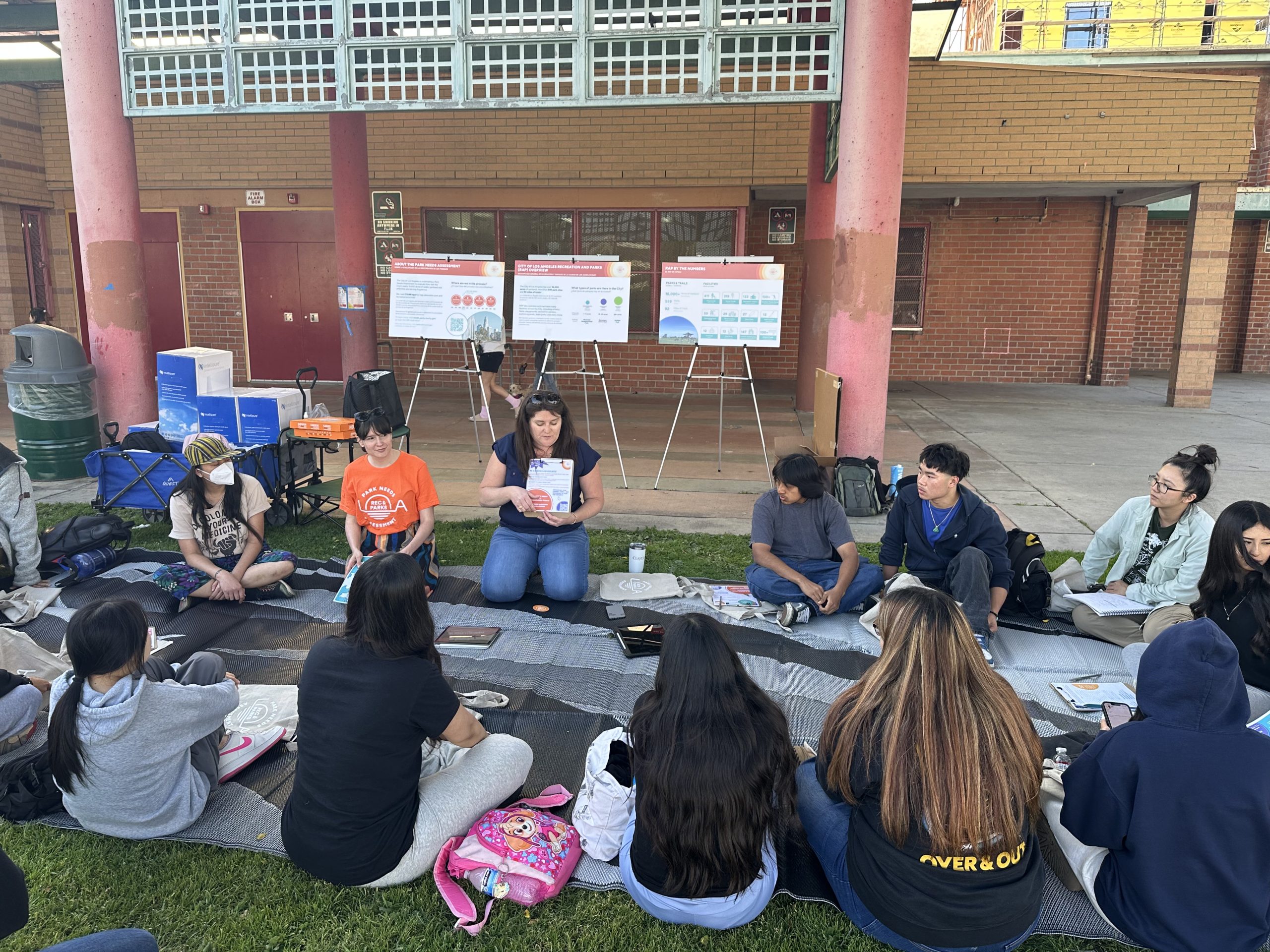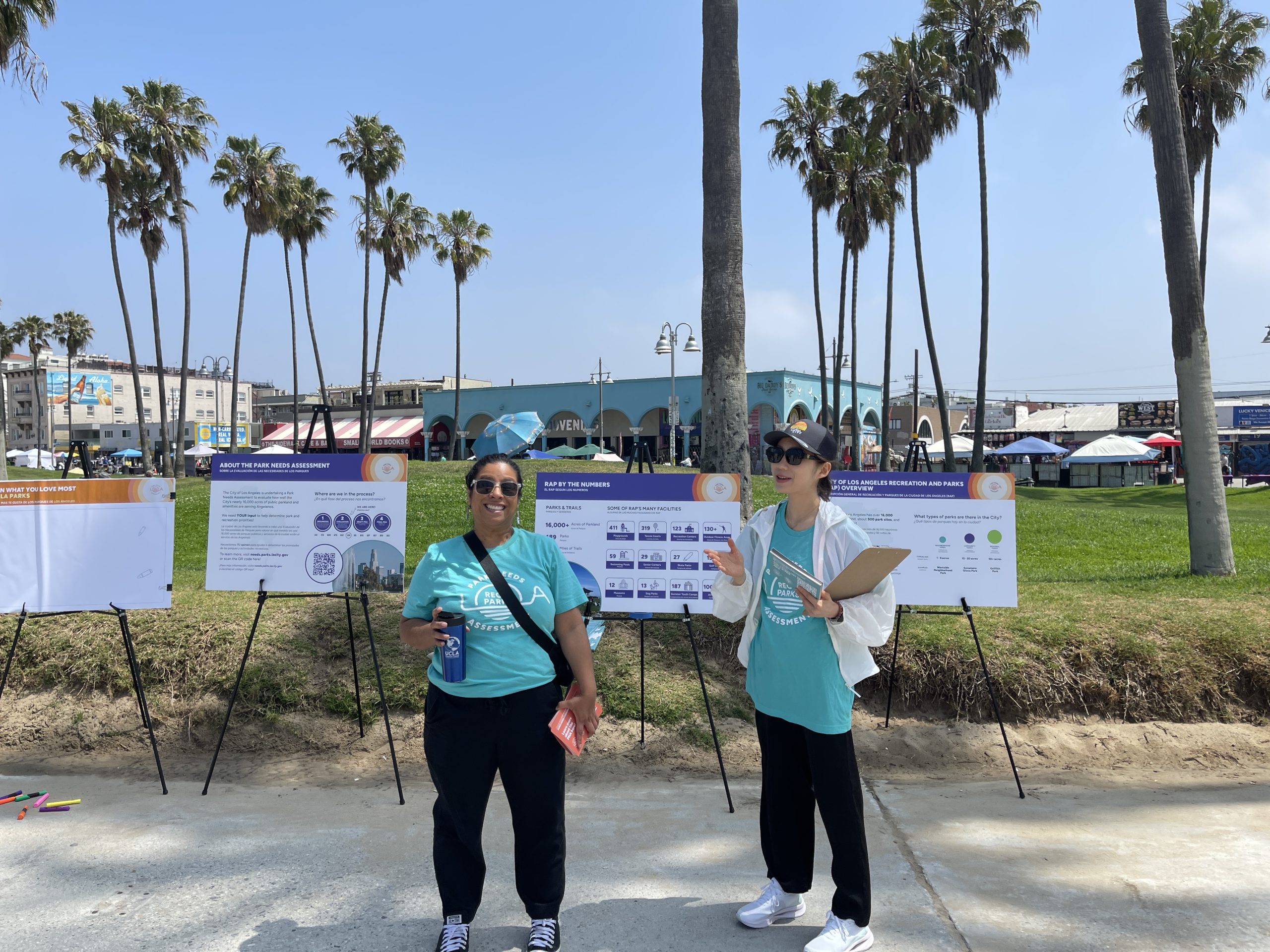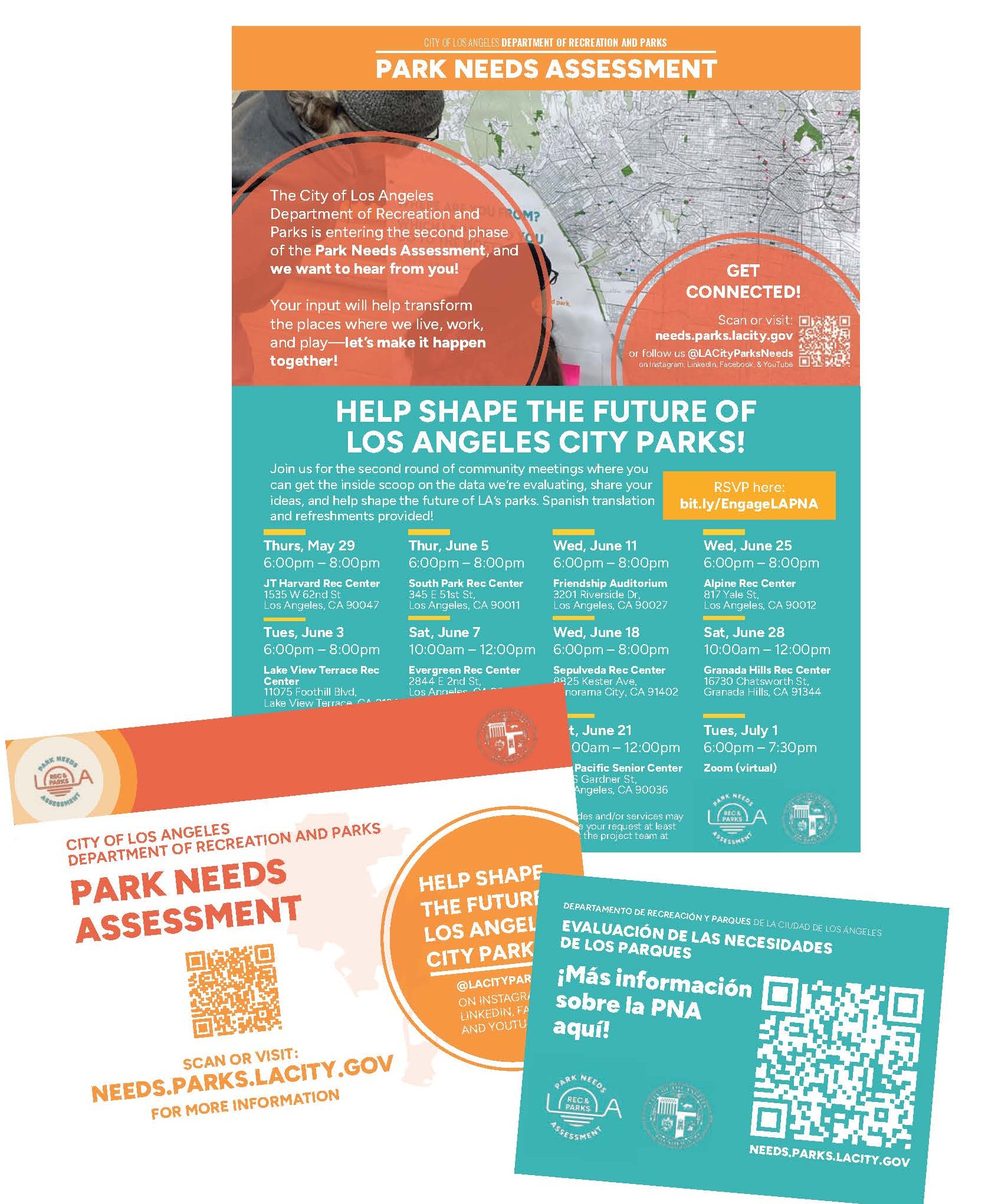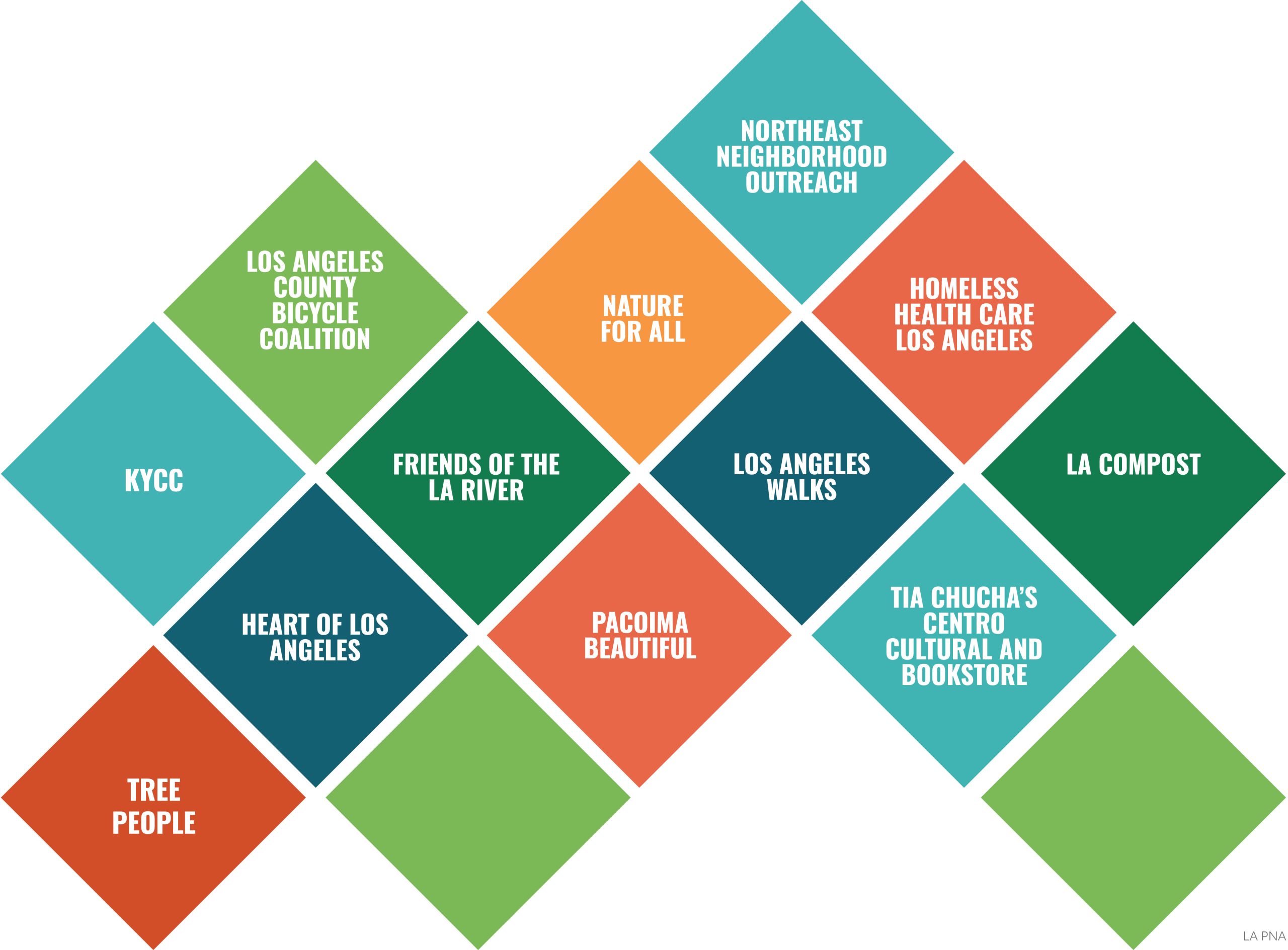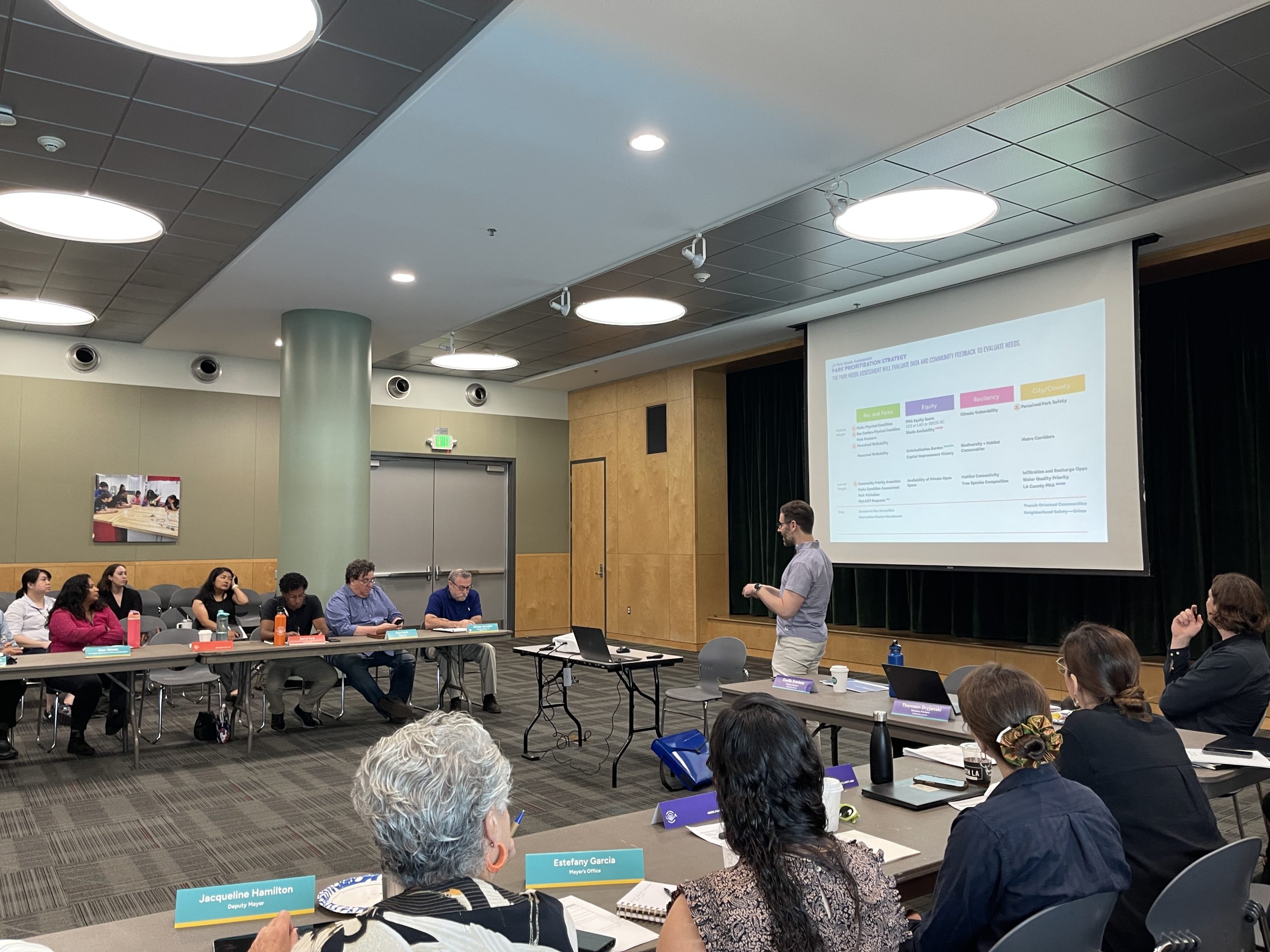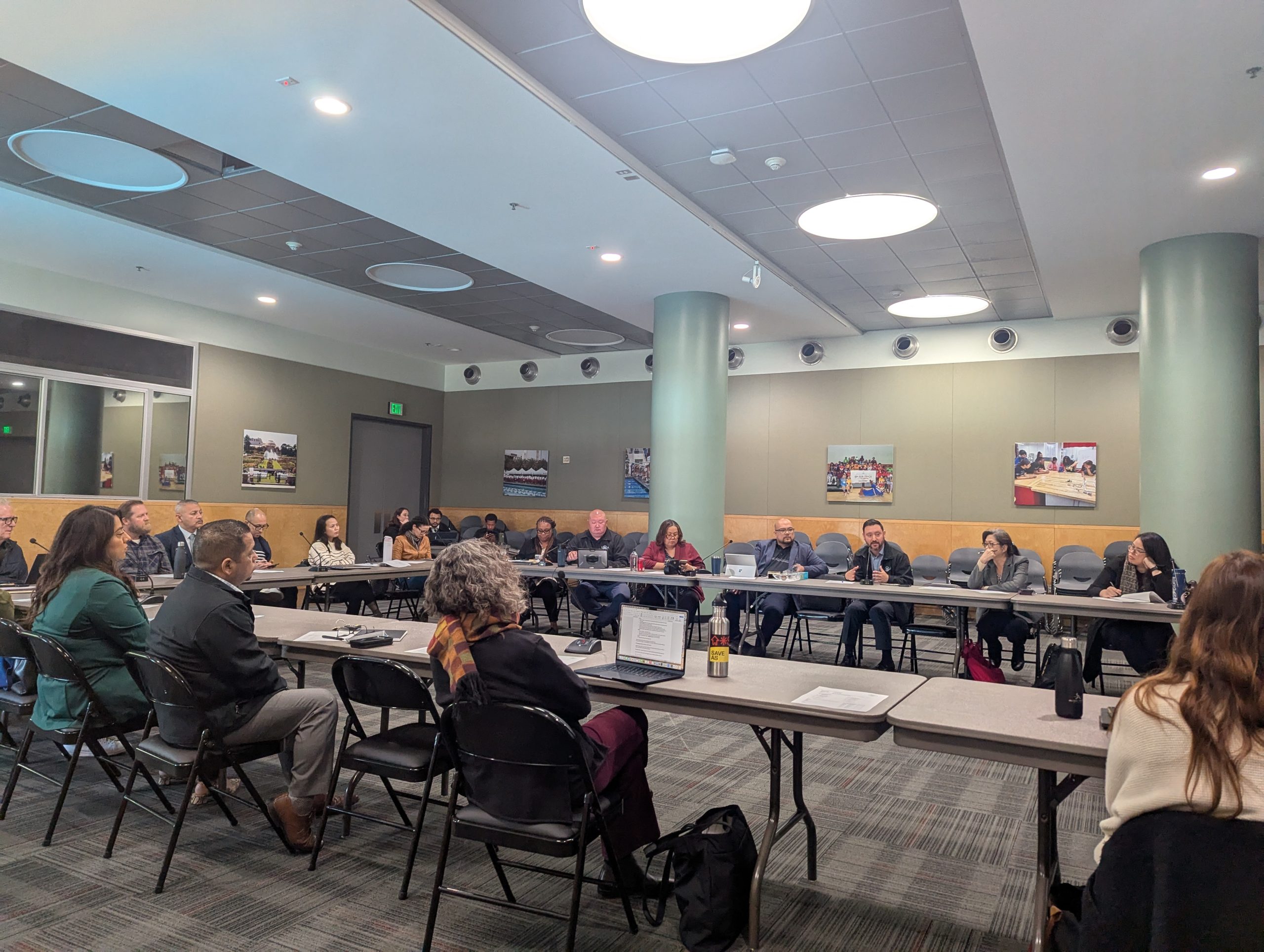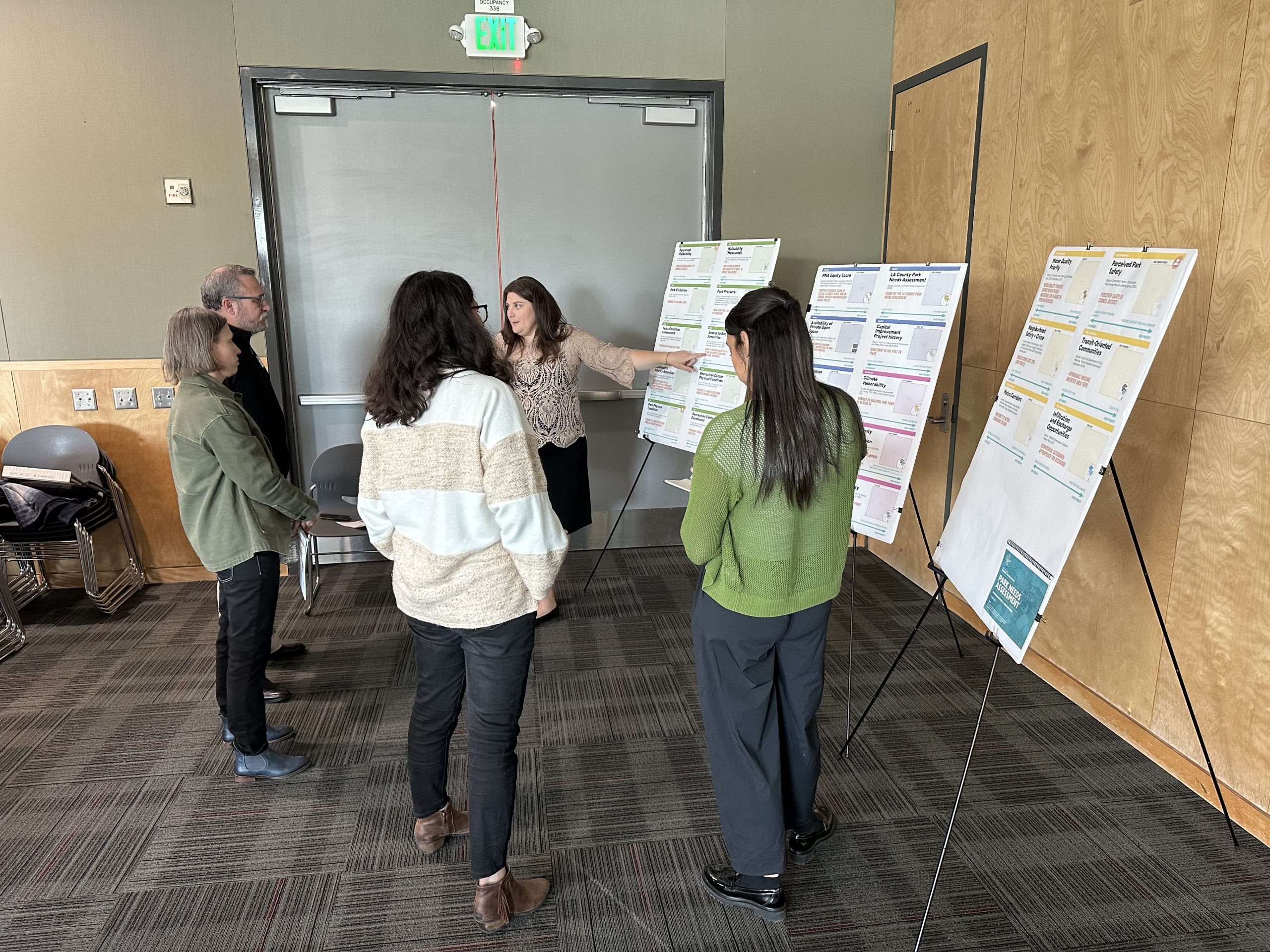In-Person Open Houses
Twenty-three open house meetings followed an interactive format designed to encourage active involvement. After an introductory presentation, participants explored stations with informational and interactive boards. Informational boards provided participants with greater detail about the project. Interactive boards provided participants with opportunities to express their opinions and preferences. RAP staff and consultants were available to answer participants’ questions.
In-person open houses provide a forum for residents to give direct feedback and be in dialog with the project team.
Virtual Open-House Meetings
Virtual open houses provided a way for those unable to attend the in-person open houses to hear the same presentation from any location. Following the presentation, a moderated Q+A session gave participants the opportunity to ask questions and engage with the project content.
Engagement Materials
Materials provided at the meetings: project boards, project fact sheets, sticky note comment cards, and contact information. A large city map allowed participants to indicate where they live and parks they frequently use. Materials were available in English, Spanish, Mandarin, Korean, and Armenian.
Youth Focused Outreach
A youth advocacy workshop with the South East Asian Community Alliance at Alpine Recreation Center and several youth-centered pop-ups, including the LA Maker Faire and the YMCA Youth Recreation Day, allowed LA’s youngest park users (and future park stewards) and their parents to have their voices heard.
Outside of the youth-focused events, an educational activity book, “draw your dream park” activity sheet, and youth survey were available at in-person meetings, at pop-ups, and on the PNA website to explain the PNA process and gather aspirations for the future of the parks.
Pop-Ups and Walkshops
To engage a broader spectrum of Los Angeles residents, PNA team members set up information booths and tables at events occurring throughout the city, connecting with individuals in familiar and comfortable settings. These pop-ups led to spontaneous, meaningful interactions with families, seniors, students, and professionals who might not have known or had the time or ability to attend the PNA open houses.
Walkshop events held at Griffith Park, Venice Beach, and Earnest E. Debs Regional facilitated inclusive and representative feedback from park users in real time.
Equity Sessions
The PNA equity sessions convened communities with non-normative or specialized relationships to parks—voices that are critical to understanding park needs but are often left out of traditional park planning. These meetings centered the lived experiences of participants to help shape more inclusive, equitable public spaces in the future. The 12 equity sessions covered topics including parks as the public stage, critical social services, parks in place, and accessibility for all. Attendees directly helped to shape components within the PNA Section IV: Guidelines.
Neighborhood Council Reports
Neighborhood Councils across Los Angeles were invited to submit short reports on local park conditions and priorities as part of the PNA outreach effort. Reports were requested to focus on each council or neighborhood’s significant challenges and opportunities to provide insight into each council or neighborhood’s lived reality. This outreach aimed to gather geographically specific insights to inform the PNA, as well as provide information to Council Districts, decision makers, and RAP. Twelve Neighborhood Councils submitted reports, can be found on the resources page.
Analog & Digital Resources
Social Media
RAP and PNA-specific Instagram, Facebook, LinkedIn, and YouTube accounts were used to keep residents informed and engaged. Posts featured images, reels, and event information, promoting surveys and community meetings as calls to action for residents interested in sharing feedback about city parks.
Print Outs and Analog Information
Flyers, mailers, QR codes, lawn signs, banners, and posters were distributed to recreation centers and local businesses near community meetings. These materials contained information about community meetings and the overall project. The flyer was available in double-sided English and Spanish, Mandarin, Armenian, and Korean.
Project Website
The PNA website (needs.parks.lacity.gov) served as an engagement hub with project information and digital surveys, continually updated throughout the PNA’s development. Now that the PNA is complete, the website has turned into an interactive version of the final PNA itself.
COMMUNITY PARTNER PROGRAM
To reach an even larger audience, 12 community partner organizations with existing networks were tasked with reaching out to their constituents to engage them in the PNA process. These groups received compensation to attend events and share information on how to provide input. The Community Partner Organizations for the PNA included:
- Friends of the LA River
- Heart of Los Angeles
- Homeless Health Care Los Angeles
- Koreatown Youth + Community Center (KYCC)
- LA Compost
- Los Angeles County Bicycle Coalition
- Los Angeles Walks
- Nature for All
- Northeast Neighborhood Outreach (NENO)
- Pacoima Beautiful
- Tia Chucha’s Centro Cultural and Bookstore
- TreePeople
COMMUNITY PARTNER GROUPS HELPED OUTREACH ON THE GROUND TO PROVIDE AWARENESS AND RESOURCES FOR THE PARK NEEDS ASSESSMENT.
Agency, Non-Profit, and Community Advocate Coordination
To reach an even larger audience, 12 community partner organizations with existing networks were tasked with reaching out to their constituents to engage them in the PNA process. These groups received compensation to attend events and share information on how to provide input. The Community Partner Organizations for the PNA included:
- Friends of the LA River
- Heart of Los Angeles
- Homeless Health Care Los Angeles
- Koreatown Youth + Community Center (KYCC)
- LA Compost
- Los Angeles County Bicycle Coalition
- Los Angeles Walks
- Nature for All
- Northeast Neighborhood Outreach (NENO)
- Pacoima Beautiful
- Tia Chucha’s Centro Cultural and Bookstore
- TreePeople
Technical Advisory Committee
City and County agencies, local technical and institutional leadership, as well as elected officials’ staff, were invited to participate in a Technical Advisory Committee (TAC) that met at three key milestones to provide technical feedback on the Park Needs Assessment. A full list of Technical Advisory Committee members is provided in the acknowledgments at the beginning of this document.
Steering Committee
The PNA Steering Committee was composed of a cross section of park advocates, interest groups, and leadership from the City and RAP. This group met at seven key milestones to review findings and give direction to analyses and recommendations. A full list of Steering Committee members is provided in the acknowledgments at the beginning of this document.
